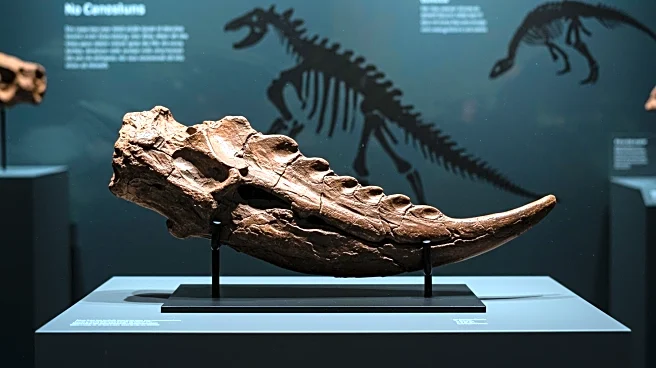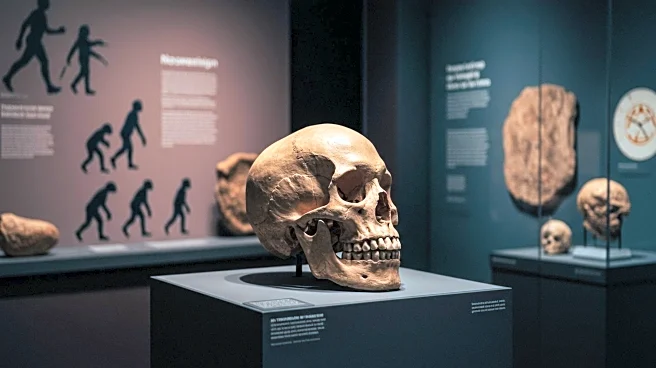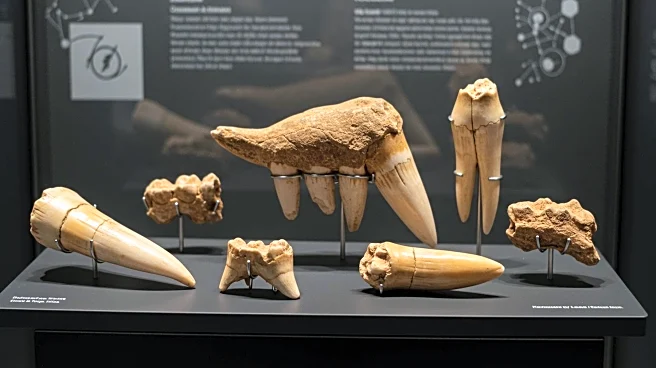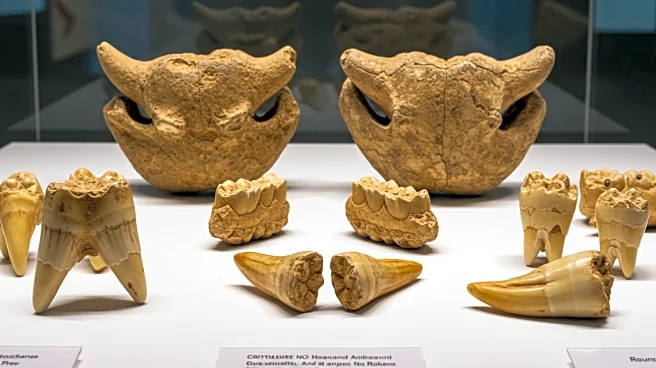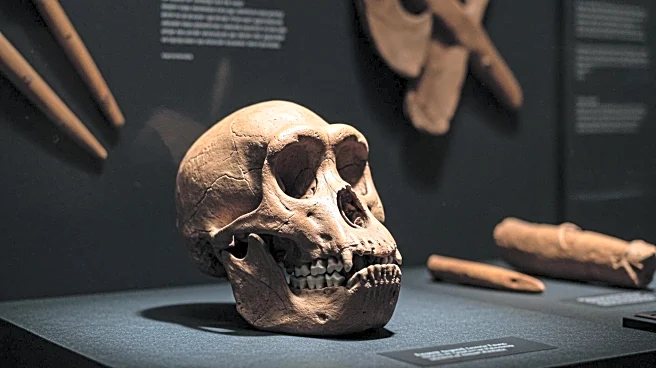What's Happening?
A newly identified dinosaur species, Shri rapax, has been discovered, showcasing unique adaptations that distinguish it from its famous relative, the Velociraptor. Unlike the Velociraptor, which is known for its large toe claw, Shri rapax had oversized hands with prominent thumb claws, suggesting a different predatory strategy. The species, similar in size to a Velociraptor, likely used its robust hands to target larger prey. The discovery was made from a fossil found in Mongolia, which had been poached and traveled through private collections before being returned to a museum. The research, published in Historical Biology, highlights the dinosaur's potential prey and its evolutionary adaptations.
Why It's Important?
The discovery of Shri rapax provides new insights into the diversity and adaptability of predatory dinosaurs. By understanding the physical adaptations of Shri rapax, scientists can infer the ecological niches these dinosaurs occupied and how they coexisted with other species. This finding also underscores the importance of fossil repatriation and the ethical considerations in paleontology. The study contributes to the broader understanding of dinosaur evolution and the variety of predatory strategies that existed, which can inform current ecological and evolutionary theories.
